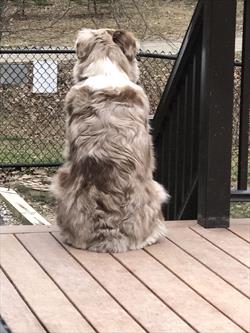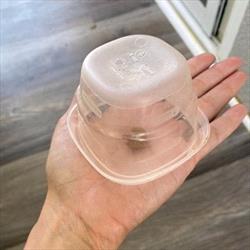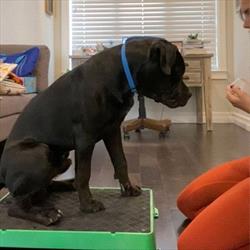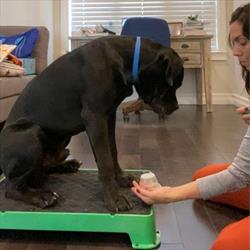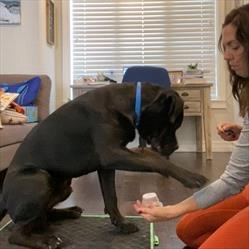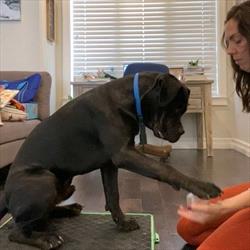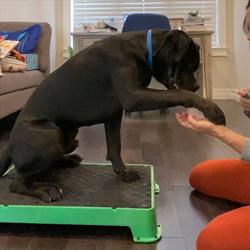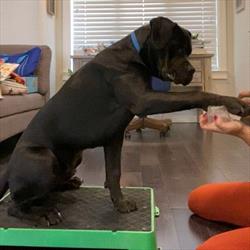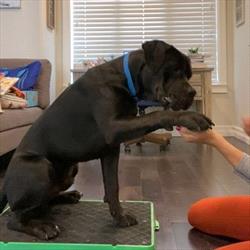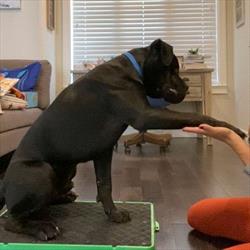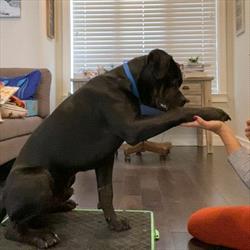Dr. Sophia Yin presenting

Photo Courtesy of CattleDog Publishing
“With good handling, the patient should get better and not worse.” Sophia Yin
From the diagnosis and treatment of behavioral conditions to the reduction of fear, anxiety, and stress in veterinary patients, the past 20 years have seen numerous advances in veterinary behavior. In the early 2000’s Sophia Yin, a veterinarian and animal behaviorist, emerged on the scene to lead this transformation. Motivated by the realization that more pets were euthanized for behavioral reasons than medical issues, she made it her lifelong passion to educate veterinarians and animal professionals about animal behavior and the benefits of Low Stress Handling for dogs and cats.
In 2009, Sophia published her first textbook, Low Stress Handling®, Restraint and Behavior Modification of Dogs and Cats. This ground-breaking book was the product of hundreds of hours spent objectively observing veterinary team members handling both dogs and cats. Using a photo journal style, Sophia illustrated her techniques for efficiently and safely restraining patients while minimizing the stress levels of the patient, client, and veterinary team. The Low Stress Handling Silver Individual and Practice Certification was born from this book in 2014.
“If we provide an environment where the animal feels comfortable and safe, while also providing clear guidance regarding what we want the animal to do, the pet will be less fearful and more cooperative, which in turn will help us get through the procedure more quickly both now and on future visits.”
Sophia Yin
Sophia developed the “Ten General Principles of Handling,” which she shared in numerous publications and lectures. These Principles have since become the core for other certification programs such as AAFP’s Cat Friendly Practices®, and Fear Free® Pets.
The low-stress concepts promoted in each of these programs, such as how to approach patients in a less threatening way and the importance of starting with a comfortable environment, all began with Sophia’s work.
“When animals are sensitive to being touched, avoid patting the animal or touching her quickly and repeatedly. Each touch will cause the dog to startle. Instead, place your hands on the animal more proximally and keep it there until the dog relaxes.” Sophia Yin
Sophia taught how to keep patients feeling secure by placing hands and body to control movement in all six directions when restraining. She also taught towel wrapping techniques for cats. An advocate for sedation before pets become distressed, she created the two and three-second rule of restraint to avoid prolonged struggling and introduced the veterinary world to the use of food as distractors and rewards during the exam and other procedures.
Sophia’s contributions to veterinary behavior did not stop at implementing low-stress/fear veterinary care. She also introduced pet professionals to the scientific method and learning theory. She provided hands-on training in the fundamentals of animal behavior, emphasizing the specific causes and effects of behavior and how a learner will only repeat what has been reinforced. In her lectures, she used visual examples from her extensive video and photographic library and cited scientific studies showing how positive punishment often increases fear and anxiety. As her career progressed, she traveled to Europe and Australia to share her doctrine of behavior teachings.
Always the consummate scientist, Sophia led the way in debunking dominance theory and the misuse of “alpha” methods in behavior training. She supplemented her science-based teachings with engaging personal stories, including how her first attempt to use punishment-based training on her beloved dog Max changed her perspective on dog training and inspired her to become a behaviorist. After attending Bob Bailey’s, Animal Behavior Enterprise (ABE) Chicken Training Camp, she expanded her interests beyond companion animals to other species and unique training opportunities. At camp, she learned important mechanical training skills and the “process of training the trainers to train the animals.” Later, it was through Bob, that she met Simon Prins. A pioneer himself, Simon introduced the novel concepts of positive reinforcement training to the canine police and military dog training world. Together, Sophia and Simon created a device for teaching targeting exercises to police and military working dogs. These exercises were then later used in top-secret operations.
In addition to her humane handling techniques, Sophia strove to help pet owners become skilled trainers increasing the accessibility of behavior treatment options for them and their pets. She developed an algorithm and coding program to streamline the training and behavior modification process for veterinarians and their clients. With pet owners in mind, she invented the Manners Minder (later renamed the Treat & Train®), an automatic, remote-controlled treat dispenser to address problem behaviors such as door dashing, jumping up, and even car ride anxiety. Later she utilized this device in the treatment of fear-related aggression towards other dogs as part of a complete behavior modification plan.
Before her untimely passing, Sophia had many long-term goals for her company, CattleDog Publishing. She was actively creating additional Low Stress Handling® Certification programs and various materials targeting pet owners, shelter workers, and dog trainers. She was creating an app for her coding program and educational material to support veterinarians in treating behavior patients in their own practice. From 2011-2014, Sophia authored several textbook chapters and was instrumental in the development of the American Veterinary Society of Animal Behavior (AVSAB) Position Statements, the 2011 AAFP Feline Friendly Handling Position Statement, and 2015 AAHA Behavior Guidelines for Veterinarians.
So much has come from Sophia’s legacy, including the body language posters hanging on many veterinary hospital walls, The Perfect Puppy in 7 days book inspired by her father and his new puppy, bite prevention posters, books, and videos for children, and the How to Behave so Your Dog Behaves book for pet owners. These publications and tools are still relevant and popular today.
In early 2020, Sophia’s mother, Jackie, chose the Veterinary Information Network® (VIN) to archive and protect Sophia’s materials. Now an integral part of the VIN family, CattleDog Publishing is revitalizing Sophia’s vision while continuing her original goals of educating others and improving animal welfare.

